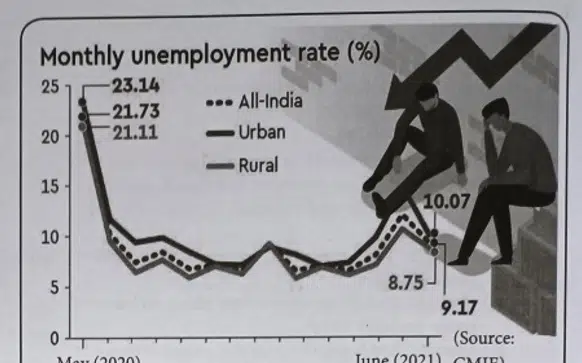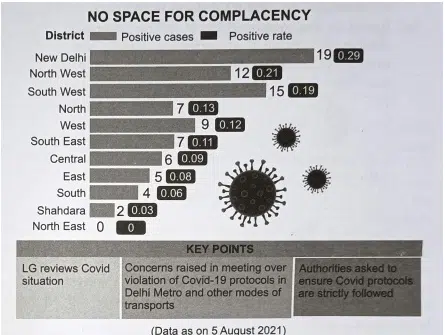
What is case based factual passage class 9?
Dive into our collection of unseen passage English comprehension readings, specifically curated for Class 9. These case based passage class 9 English provide profound insights into a myriad of topics, enhancing the depth of understanding and reading proficiency for students.
Class 9 English: Unseen Comprehension Passage Reading
Unseen Passage English: Exploring Animal Perspectives
Comprehension Passage Reading on Human Views of Animal Welfare
1. Man suffers from a distorted complex. He always considers animals as inferior beings only fit for exploitation. Man has been using domestic and wild animals for his selfish ends. Many animal lovers joined together to form the ‘Society for Prevention of Cruelty to Animals‘.
2. The society has been working for the well-being and welfare of animals for many years. Its main aim is to change the attitude and thinking of people towards animals. It is quite sad that animals continue to be ill-treated, tortured and killed according to the whims of the people. About 15% of the people entertain the belief that animals are man’s slaves. They use, misuse and torture them accordingly. About 50% of the people exploit animals for selfish ends.

3. Horses and oxen are used for transport, carrying loads and in agricultural activities. Dogs, cats and many birds are domesticated for fun, entertainment and convenience. Wild animals like elephants, tigers, lions and deer are victims of poaching and killing. Animals are forced to do acrobatic feats in circus shows. Unfortunately, about 35% of people don’t think about the animals at all. They are totally indifferent to them.
4. The Government and the animal lovers must work together to bring a change in the attitude of the people. Animals should not be killed and poached for fun, furs or financial gains. They should be treated with kindness, care and sympathy. Cruelty towards animals must be legally punished.
Based on your understanding of the passage, answer the following questions.
(i) In the line “… fit for exploitation”, the word `exploitation’ does not refer to:
(a) abuse
(b) ill-treatment
(c) oppression
(d) utilisation
(ii) Based on your understanding of the passage, choose the option that lists the abuses of animals.
1.
| Used for transport |
2.
| Used for carrying loads |
3.
| Acrobatic feats in circus |
4.
| Poaching |
5.
| Agricultural activities |
6.
| Domesticated for fun |
(a) 1 and 2
(b) 2 and 6
(c) 5 and 6
(d) 3 and 4
(iii) For many years, `Society for Prevention of Cruelty to Animals‘ has been working for:
(a) destruction of animals.
(b) exploitation of animals.
(c) the welfare of animals.
(d) All of these
(iv) It is very disappointing that animals are still:
(a) ill-treated
(b) tortured
(c) killed
(d) All of these
(v) For what activities do people use horses and oxen?
(a) Carrying loads
(b) Transport
(c) Agricultural activities
(d) All of these
(vi) For fun, entertainment and convenience, man domesticates:
(a) birds
(b) cats
(c) dogs
(d) All of these
(vii) Which of these animals are victims of poaching and killing?
(a) Lions
(b) Tigers
(c) Elephants
(d) All of these
(viii) Animals should not be used in circus to earn one’s livelihood. (True/False)
(ix) ‘Society for Prevention of Cruelty to Animals’ aims to change the attitude of man towards……….
(x) What does the word ‘indifferent’ in para 3 mean?
Answers:
(i)(d) utilisation
(ii) (d) 3 and 4 (iii)
(iii)(c) the welfare of animals.
(iv) (d) All of these
(v) (d) All of these
(vi) (d) All of these
(vii) (a) Lions
(viii) False
(ix) animals
(x) unconcerned
Download the Above Passage in PDF (Printable)
Unseen Passage English: Covid-19 Dynamics in Delhi
Comprehension Passage Reading on the Capital’s Pandemic Response

1. Though the Covid-19 situation seems to be under control and the overall positivity rate has remained between 0.08% and 0.12% in the past one week, New Delhi has reported the highest positivity rate of 0.29% among all 11 districts. While North West and South West have reported a positivity rate of 0.21% and 0.19%, respectively, all other districts have comparatively lower numbers. North East district has nil cases and a zero positivity rate. While there is no clear indication of Covid-19 cases rising again in the capital, the numbers are rising in some parts of the country.
Delhi also needs to be on alert because the recent highest positivity rate of 0.12% (85 new cases) over the past 24 days was reported on 1st August, 2021.
2. According to the district-wise performance report, on July 31 Central district reported six cases with a positivity rate of 0.09%, East had five cases and 0.08% positivity rate, New Delhi 19 cases and 0.29%, North seven cases and 0.13%, North West 12 cases and 0.21%, Shahdara two cases and 0.03%, South four cases and 0.06%, South East seven cases and 0.11%, South West 15 cases and 0.19% and West nine cases and 0.12% positivity rate. All districts are conducting 4,000 to 6,000 tests every day, a majority of them being RT-PCR.
3. A health department official said the positivity rate was far lower than the target of 5% that the districts were supposed to maintain. “It’s difficult to pinpoint the reasons behind some districts reporting a higher positivity rate than others. Only experts can highlight the causes after a detailed analysis,” added the official.
4. Officials from the districts reporting higher positivity rates said they were conducting a maximum number of tests in places like containment zones, slums, middle-class areas and villages. A government hospital doctor involved in Covid-19 management said, “If more tests are conducted in containment zones and adjoining clusters and among the contacts of Covid-positive people, then the positivity rate is likely to be slightly higher.
More tests in super-spreader areas also pushes up the positivity rate. It has been observed that more tests conducted in slums and under privileged areas throw up a lower positivity rate. That is why it is suggested to use mixed locations for carrying out the tests.” (Source: Times of India)
Based on your understanding of the passage, answer the following questions.
(i) “Though the Covid-19 situation seems to be under control…….”It reveals that the writer:
(a) is certain and confident about the Covid-19 situation in Delhi.
(b) is overconfident about his knowledge about Covid-19.
(c)complains about the Covid-19 situation in Delhi.
(d) is not certain and confident about the Covid-19 situation in Delhi.
(ii) “Delhi also needs to be on alert …” What should Delhiites do for being alert?
(a) They should remain in home as much as possible.
(b) They should wear mask whenever they go out of their home.
(c) They should wash their hands with soap and water and apply sanitizer on their hands frequently.
(d) All of the above.
(iii) Officials were conducting a maximum number of tests in places like containment zones, slums, middle-class areas and villages. It reveals that the officials
(a) thought that the posh areas hardly had positive cases.
(b) thought that these areas were likely to have more positive cases.
(c) thought that being the poor the people of these areas might have very weak immunity.
(d) hesitated to conduct tests in posh areas.
(iv) Based on the graphical chart in the passage, choose the option that correctly depicts the number of positive cases in North West Delhi and West Delhi.

(a) Option (1)
(b) Option (2)
(c) Option (3)
(d) Option (4)
(v) Which of the following actions of people plays the most important role in controlling and preventing the spread of Covid-19 cases?
(a) Avoiding people to people contact as much as possible.
(b) Eating healthy food.
(c) Washing hands with soap and water frequently.
(d) Doing physical exercise to boost immunity
(vi) In the line “If more tests are conducted in containment zones and adjoing clusters …” Here the ‘adjoing clusters’ refers to:
(a) areas which have Covid-19 positive cases.
(b) the villages nearby a village which has Covid-19 positive case(s).
(c) the areas nearby an area which has Covid-19 positive case(s).
(d) the buildings in which there is a person with Covid-19 positive.
(vii) Pick the option that lists the statements that are NOT TRUE according to the passage.
1. There are 10 districts in Delhi.
2. Though Covid-19 situation in Delhi is under control, yet we must follow Covid-19 protocols strictly.
3. Shahdara has the least Covid-19 positive cases.
4. The containment zones may have higher positivity rate.
5. People need to be very alert while travelling in metro train and other modes of transport.
(a) 1 & 3
(b) 2 & 5
(c) 3 & 4
(d) 1 & 4
(viii) Delhi Metro follows Covid-19 protocols offhandedly. (True/False)
(ix) ‘Mixed locations’ includes the areas living people with………. income.
(x) What does the term ‘containment zones’ refer to?
Answers:
(i)(d) is not certain and confident about the Covid-19 situation in Delhi.
(ii) (d) All of the above.
(iii)(b) thought that these areas were likely to have more positive cases.
(iv) (a) Option (1)
(v) (a) Avoiding people to people contact as much as possible.
(vi) (c) the areas nearby an area which has Covid-19 positive case(s).
(vii) (a) 1 & 3
(viii) True
(ix) low income, middle income and high
(x) The term ‘containment zones’ refers to the areas where Covid-19 positive cases are found in large numbers.
Download the Above Passage in PDF (Printable)
Unseen Passage English: Unraveling India’s Unemployment Scenario
Comprehension Passage Reading on Employment Trends and Challenges
1. According to the Centre for Monitoring Indian Economy (CMIE), in June 2021, urban unemployment rate fell, but still remained high at 10.07% compared with 14.73% in May. Rural unemployment rate in June stood at 8.75% from 10.63% in May.
April and May accounted for 22.7 million job losses, according to CMIE. May 2021 was only the fourth month since at least January 2016 when overall unemployment rate breached the double-digit mark. Amidst country-wide lockdown, unemployment rate went past the mark during April, May and June last year.
2. The overall unemployment rate reached its peak of 23.52% in April last year, but started falling from the next month onwards. In May last year, country’s unemployment rate was 21.73%. In June last year, it was 10.18%. Sources said that gradual withdrawal of partial lockdown amidst declining number of people getting affected are pushing workforce back into work, resulting in reduction in unemployment rate amidst a slight recovery in the labour force participation rate (LFPR). From 40.5% in the week ended May 16, LFPR stood at 39.6% in the week ended June 27. The average LFPR in 2019-20 was 42.7%.

3. LFPR is an age-specific proportion between persons either working or actively seeking work and the total population in working age group, usually 15 years and above. Unemployment rate is a ratio between persons who are not currently in job but are actively searching for one and the total labour force. CMIE’s MD & CEO Mahesh Vyas wrote recently, “The employment rate was mostly over 37% between July 2020 and March 2021 with an average that was close to 38%. It fell to 36.8% in April and then sharply to 35.3% in May 2021. The first four weeks of June 2021 indicate a recovery that is still just short of 36%. This is a worryingly low ER.”
(Source: Financial express.com)

Based on your understanding of the passage, answer the following questions.
(i) What was the consequence of Covid-19 pandemic in India?
(a) loss of a large number of lives
(b) loss of a large number of livelihoods
(c) both (a) and (b)
(d) neither (a) nor (b)
(ii) Pick the option that lists the statements that are NOT TRUE according to the passage.
1. In May 2021, the overall monthly unemployment rate was 10% or more than 10%.
2. In May 2021, the overall monthly unemployment rate was less than 10%.
3. Since January 2016, it was fourth time when overall monthly unemployment rate was less than 10%.
4. Since January 2016, it was fourth time when overall monthly unemployment rate reached double digits.
(a) 1 & 2
(b) 1 & 4
(c) 2 & 4
(d) 2 & 3
(iii) Based on the graph, what was the approximate urban unemployment rate in December 2020?
(a) about 7%
(b) about 10%
(c) about 15%
(d) about 20%
(iv) In which of the following months was the worst situation of unemployment problem in our country?
(a) In April 2021
(b) In June 2021
(c) In April 2020
(d) In May 2020
(v) What does LFPR refer to?
(a) the working people and the unemployed people
(b) the working age group people who are working or seeking work and the total population in working age group
(c) the working people and the people seeking work
(d) the people seeking work and the total population in working age group
(vi) Who among the following is a member of total labour force?
(a) a person eligible to work but not willing to work
(b) a person who is eligible and willing to work
(c) a person who is willing to work but not eligible to work
(d) all of the above
(vii) On the whole, what was the employment rate between July 2020 and March 2021?
(viii) “… pushing workforce back into work…” the word ‘workforce’ refers to……….
(ix) The current unemployment recovery rate is a matter of grave concern. (True/False)
(x) The synonym of the word ‘among’ in para 1 is………. .
Answers:
(i)(c) both (a) and (b)
(ii) (d) 2 & 3
(iii)(b) about 10%
(iv) (c) In April 2020
(v) (b) the working age group people who are working or seeking work and the total population in working age group
(vi) (b) a person who is eligible and willing to work
(vii) Between July 2020 and March 2021, the employment rate was nearly 38%.
(viii) all people who are available for work.
(ix) True
(x) amidst
Download the Above Passage in PDF (Printable)